An electric fan is well known as an air circulator. But what if it suddenly overheats? What could be the reason, and what to do about it? Don't worry! We've researched the answers for you.
It's important not to panic when an electric fan overheats. There might be a fault with its motor or wire. However, do these steps to cool down the electric fan:
- Turn the switch off and unplug the electric fan.
- If there is a visible fire, immediately extinguish it.
- Wait for a few minutes or until the motor has already cooled down.
- Disassemble the fan, including the motor cover.
- Troubleshoot the internal parts.
- Clean the electric fan.
This article will serve as a learning tool for exploring the components of an electric fan. We'll talk about its parts, cleaning steps, and more. We'll go through why it overheats and what action to take. You'll learn a lot from us! So, join us in reading!
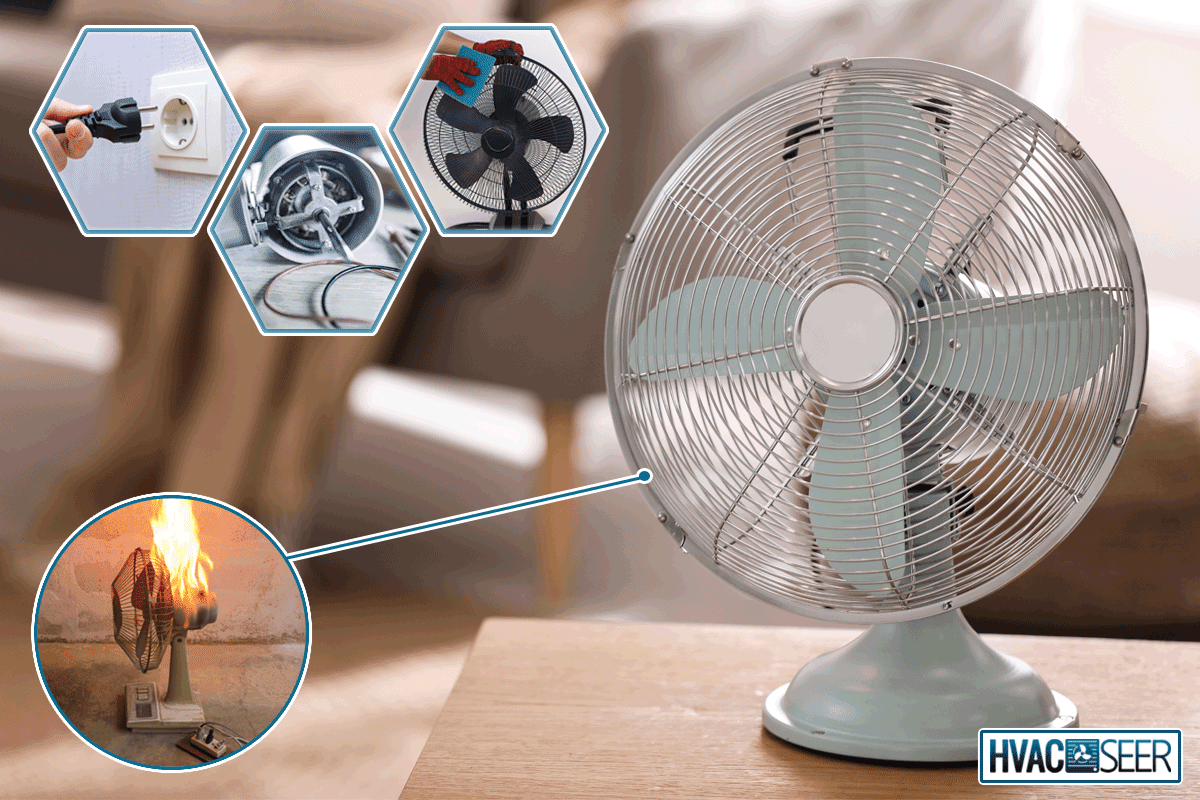
What to Do When an Electric Fan Overheats?
An overheating fan can be harmful and create a fire. But it's important to stay calm. See below the things to do in detail.
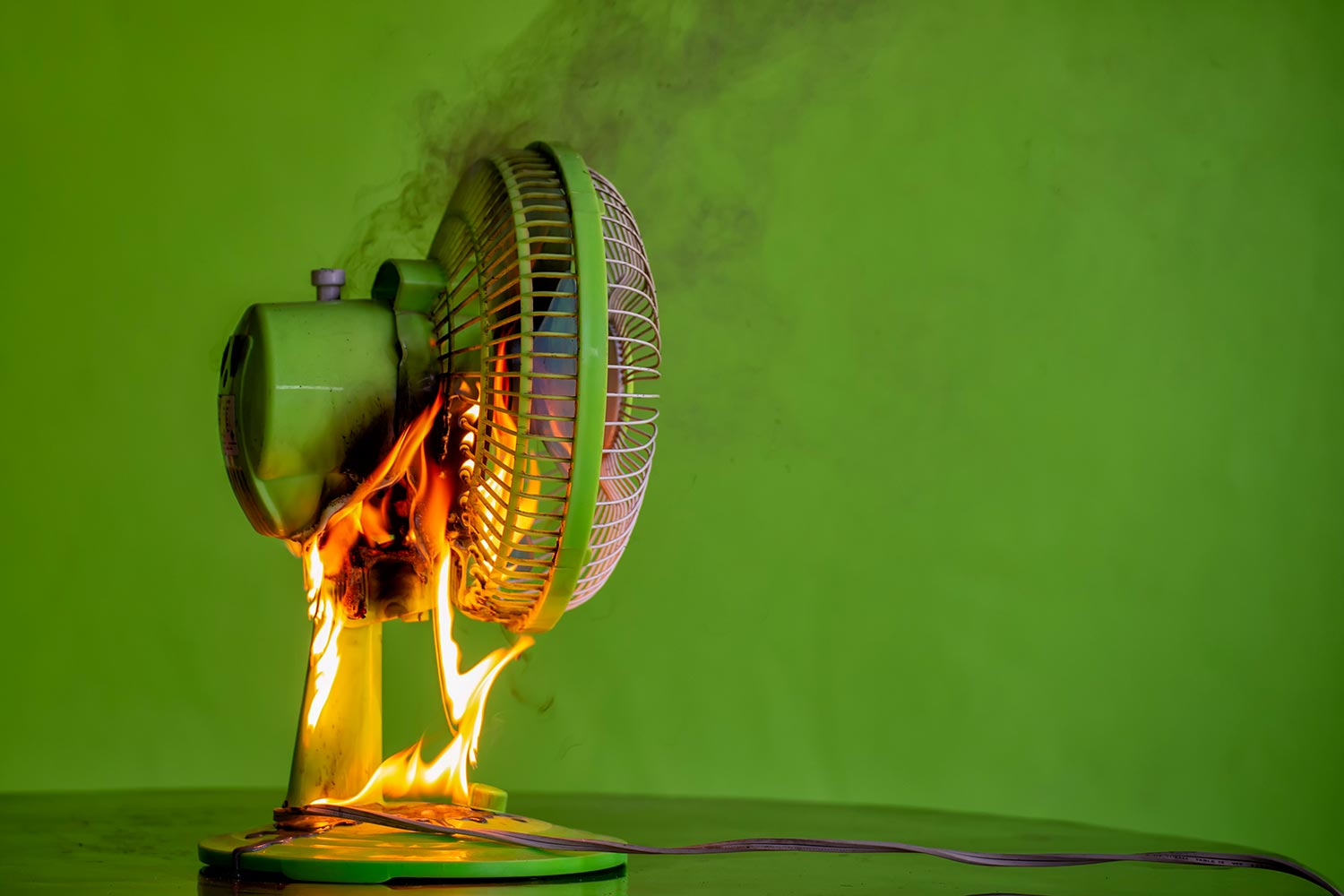
Turn Off the Power
Immediately turn the switch off and unplug the electric fan before it sparks a fire. This is to stop the fan motor from getting electrical energy that could increase the heat. If there are children around, make sure to vacate them from the area of the overheating fan.
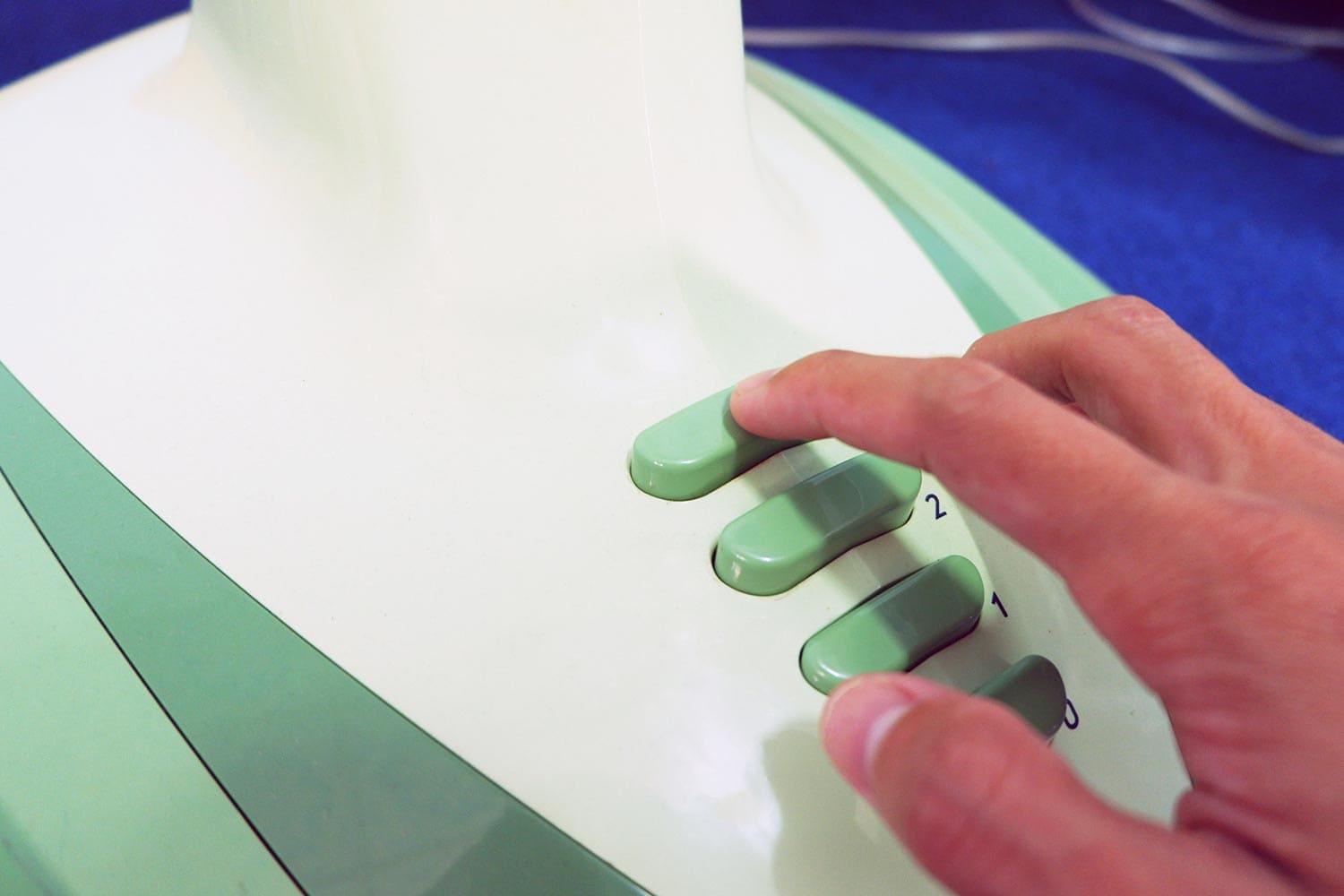
Cool Down or Put Out the Fire
Regardless of how the overheating ocurred, you need to cool it down and wait for a few minutes before you can touch and inspect the fan motor. However, you might need a fire extinguisher if there's a visible fire. Call for help if the fire does not go off.
On the other hand, do not touch the fan until a burnt smell goes out. If you see very thin smoke, wait for the smoke to clear before you proceed to troubleshoot.
Disassemble the Components
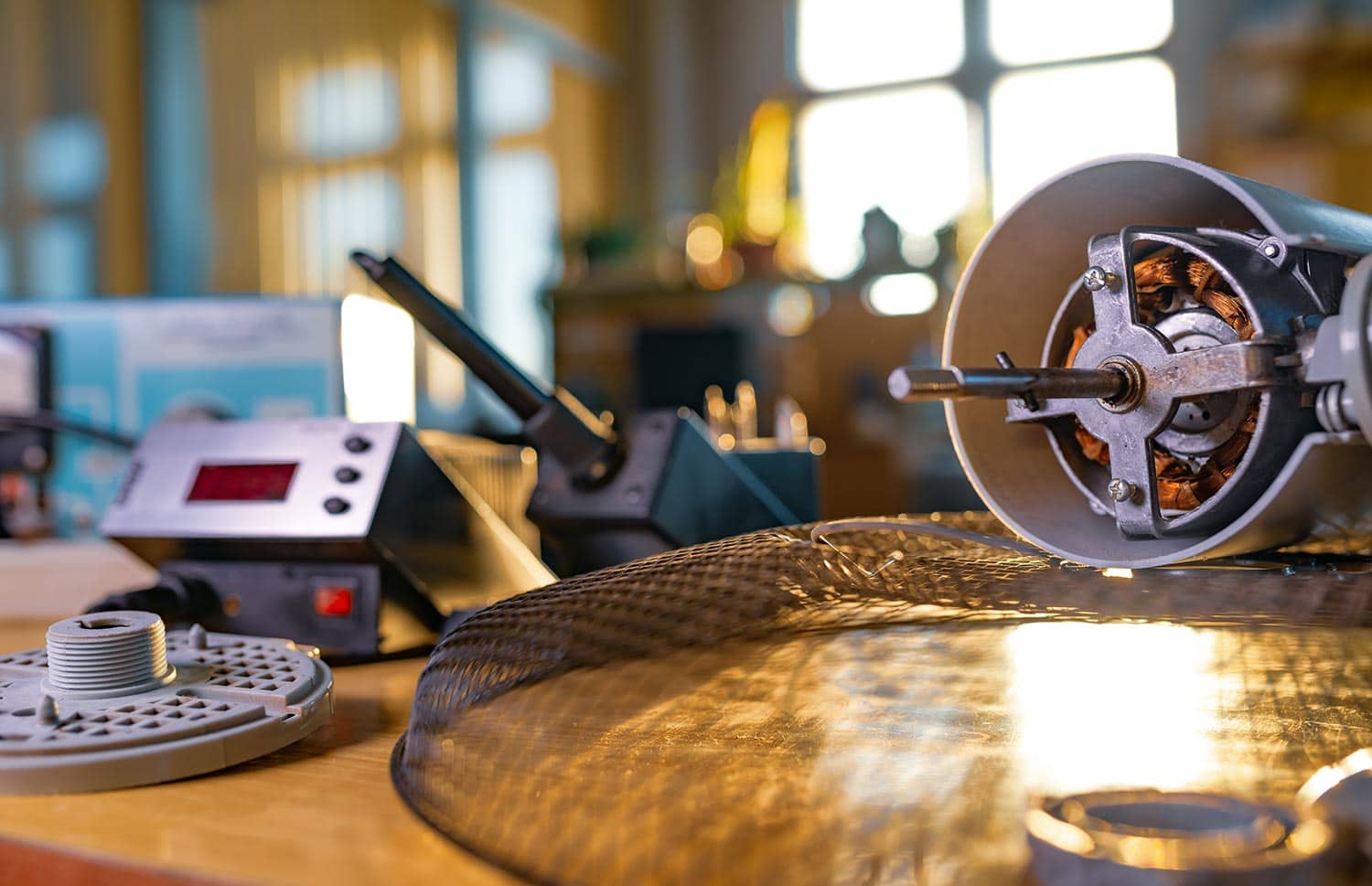
You might need to disassemble the parts to see where the overheating started. Refer to the instructions below:
- Unlock the cover.
- Loosen the blade by turning the locks until you remove the other cover at the back.
- Unscrew the oscillation knob and open the motor cover, including all of the remaining parts that can have screws on them.
- To avoid losing the screws, wrap a tissue around them and label them according to where they are placed.
- Put all the internal parts and screws on a clean table to start troubleshooting.
Watch the clip below on how to disassemble the electric fan:
Troubleshoot the Internal Parts
When an electric fan overheats, buying a new one is not always the answer. It's important to understand what parts got damaged so that it won't affect other components.
We've provided the list of internal parts of an electric fan and how to tell if they're in good condition. See the list below.
Electric Motor
It's the main part of an electric fan, which converts energy from electrical to mechanical. It's the first to receive electricity and where the overheating occurs.
Examine the wires that connect to the motors for corrosion. The corroded wires will spread chemicals that could eat up the motor and cause it to stop working. If it's the case, you might need to replace the motor itself.
However, you can clean it if everything seems normal. There might be dust all around the motor contributing to its high temperature. You can use a dry brush to dust it off.
Gearbox
It is a container for storing small shafts that control the speed of rotation and stability of the motor. These shafts are designed to follow the movement of the fan.
If the gearbox has damage, you will need to replace it with the same model. Otherwise, your fan will not oscillate when turned on due to compatibility issues.
Capacitor
Usually, the capacitor is inside the gearbox. It uses a magnetic force to maintain the continuous rotation of the fan. One sign of a broken capacitor is the slow rotation of the blade. You need to replace the capacitor, or else it will drain electrical energy and cause the fan to heat up.
Switch
The switch indicates fan speed by locking the power into a particular speed level. Most electric fans have at least three levels of intensity.
Also, there are fan models wherein the switch is at the back of the motor and near the electrical source. Check if the switch is loose or burnt. If it is, it will need replacing.
Rotor
A rotor is a metallic rod to which the blade is attached. The rotor works by spinning the blade rapidly upon fan activation. When the rotor crashes against the motor, it's possible to heat up the rod and trigger an increase in temperature due to friction.
You can lubricate the rotor to allow it to spin normally.
Stator
On the other hand, the stator is the rotor's outer part, which makes the body stable from spinning with the blade. It's easy to check if the stator is out of position or distorted by heat because the fan will likely be noisy. You might need the help of a technician to fix the stator.
Copper Winding
It's a bundle of copper wires wrapped around the motor. Its purpose is to reduce heat transfer to help the fan release cooler air. Ensure that the copper wires are compact around the engine.
Cleaning the Electric Fan
Once you have fixed or replaced the faulty parts, you can clean the fan's external parts. Cleaning the outer parts of an electric fan helps improve the air temperature.
Prepare the following tools.
Cleaning Solution
Use a non-corrosive cleaning solution for safety.
See this multi-purpose cleaner on Amazon.
Scrubbing Pad
You can use a sponge with a scrubber on its back.
See this scrubbing pad set on Amazon.
Small Brush
You need a small brush to clean the grill covers.
If you have the tools ready, you can now follow these steps:
- In a basin of water, pour a liquid solution.
- Wash and scrub the parts one by one. Remember that this cleaning method is for external parts only, like grill covers, blades, and locks.
- Use a small brush to clean the dirt between the grill covers.
- In another water basin, wash the parts again to remove the soap bubbles.
- Let them dry before reassembling the fan.
After cleaning and reassembling the fan, you can test it to see if everything is working well. It's recommended to inform your fan manufacturer about the overheating incident. They might help you with further assessment needs.
Also, do not wait for the electric fan to accumulate too much dirt. Depending on how fast it gets dirty, you can clean it at least once every two weeks.
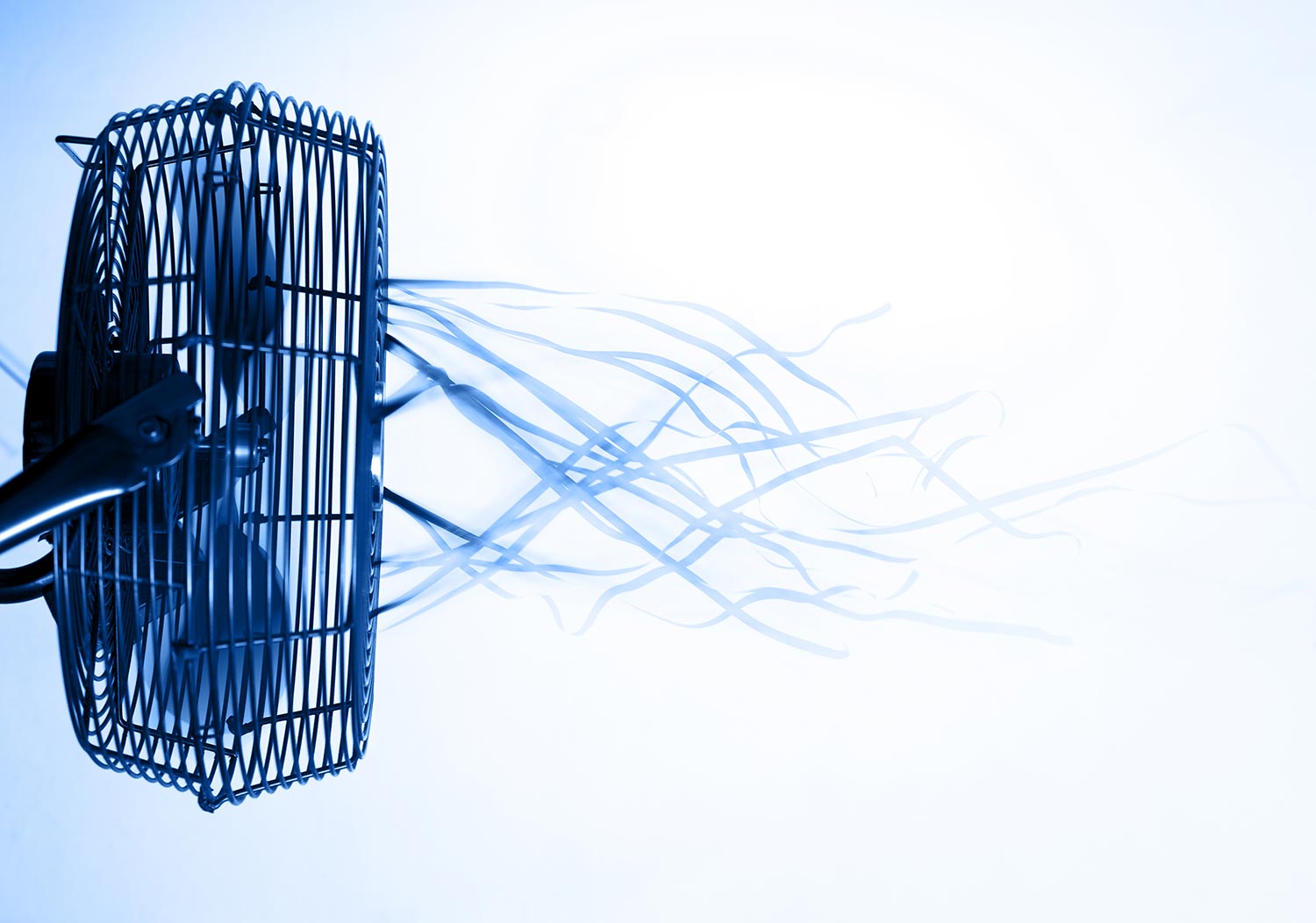
Why Do Electric Fans Overheat?
Aside from a faulty motor and parts, there are more reasons why your electric fan overheats. See these reasons below.
Short Circuit
It refers to the incompatibility of the fan with the power source, which may result in an irregular discharge of energy or even fire. A short circuit occurs when the voltage requirement of the fan does not match the voltage capacity of the outlet.
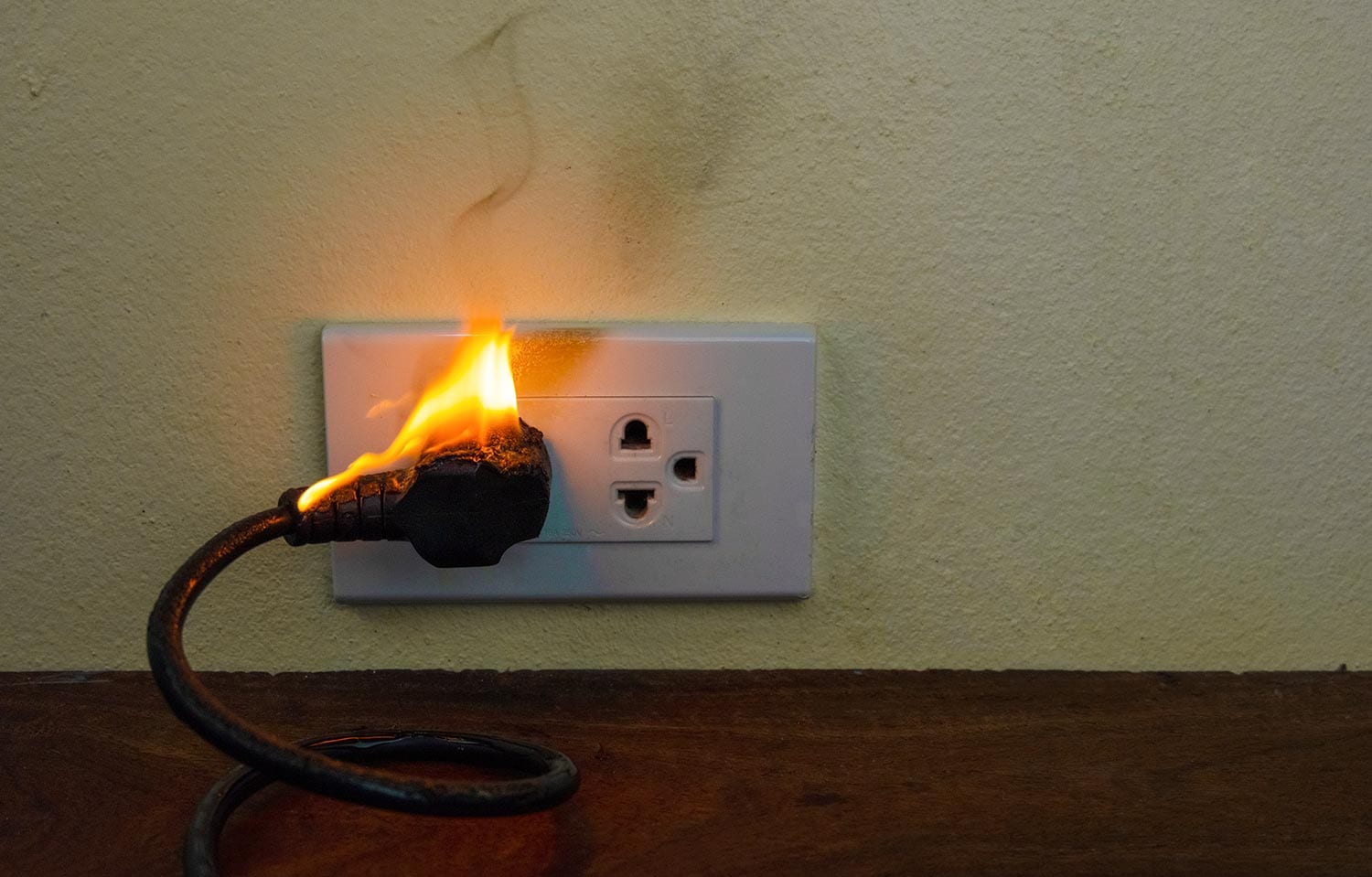
On average, electric fans use around 110 to 240 volts, depending on the manufacturer. It's important to stay within the voltage requirement to avoid short circuits.
Overusing
Another reason for fan overheating is overuse. It's ideal to use your electric fan not to exceed eight continuous hours a day. You should observe your fan more often and touch it if its motor is heating up.

Hot Season
Electric fans can naturally heat up in an extremely hot season. In this case, you can reduce its use and try using other options instead, like an AC. It's also good to have a backup fan that you can switch places with an overheating fan.

Additionally, an electric fan might not be ideal when the outdoor temperature reaches 95 degrees Fahrenheit. This is because the fan would blow hot air and increase the temperature instead of making it cool.
Where to Place the Electric Fan?
It's common to place an electric fan beside your bed to make your sleep more comfortable. But ideally, you should place it opposite the window. You may also place it near the AC to absorb cool air and spread it effectively across the room.
Conclusion
We did learn a lot. We discussed what to do when your electric fan is overheating. Also, we provided some steps to troubleshoot the parts of a fan and the reasons for overheating.
You've learned how to clean the external parts of an electric fan and why doing so is essential. We've suggested that placing it near the window helps improve the air.
It's crucial not to panic and to assess the cause of the overheating properly. Always remember to check the quality and compatibility of the fan before use.
Are you up for more things to learn? Try reading these:




